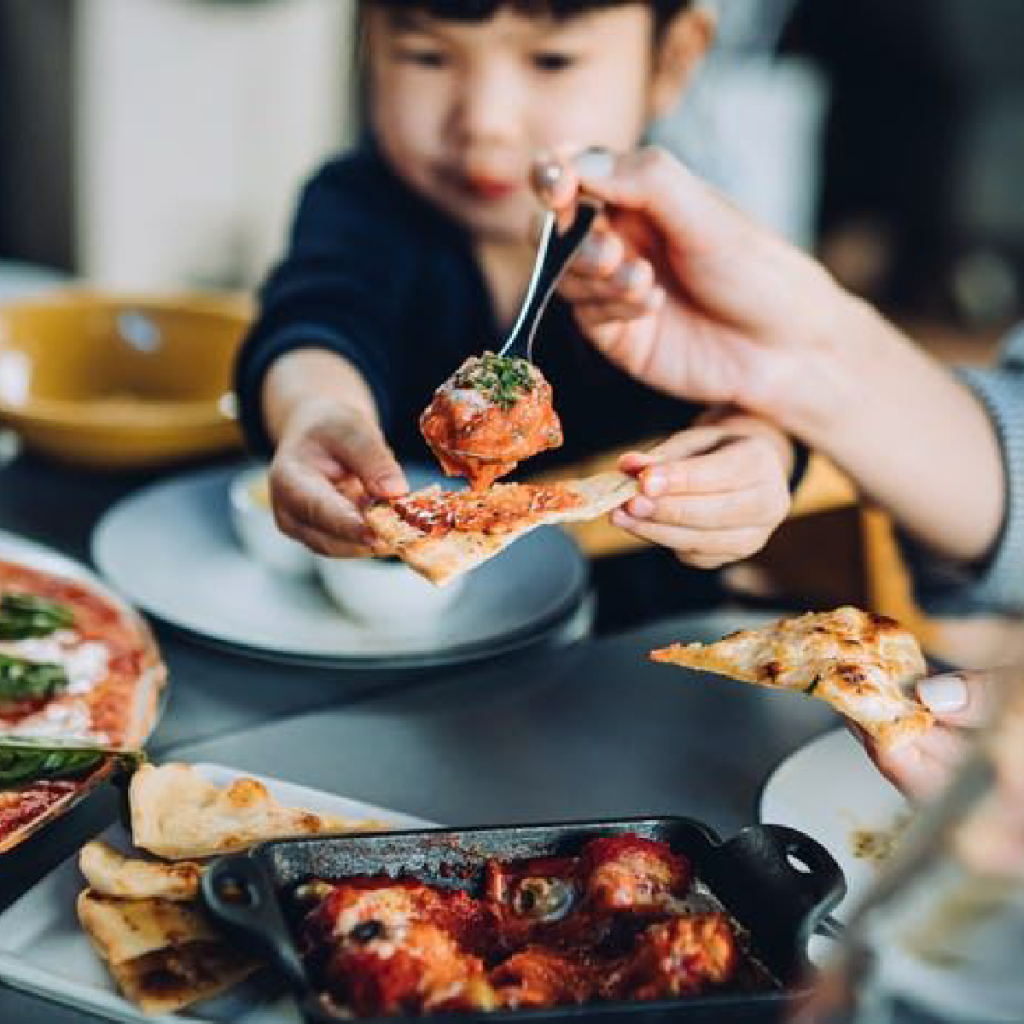Discover effective strategies and tips on how to handle hyperactivity in a restaurant setting.
How to Handle Hyperactivity in a Restaurant
Are you tired of feeling like a circus ringmaster trying to handle your hyperactive child in a crowded restaurant? Well, fear not! In this article, we will walk you through some helpful strategies and tips to make your restaurant visits smoother and more enjoyable for everyone involved.

Understanding Hyperactivity in Children
Before we dive into the practical tips, let’s take a moment to understand what hyperactivity actually means. According to experts, hyperactivity is a term used to describe excessive levels of activity, impulsivity, and difficulty in paying attention. It is often associated with conditions like Attention Deficit Hyperactivity Disorder (ADHD).
Hyperactivity is not just about having lots of energy; it’s about having a hard time controlling that energy. Children with hyperactivity may constantly fidget, have difficulty staying seated, and seem to be always “on the go.”
However, it’s important to note that not all energetic children are hyperactive. Hyperactivity becomes a concern when it significantly impacts a child’s daily functioning.
There are various factors that can contribute to hyperactivity in children. One common cause is genetic predisposition. Research suggests that certain genes may play a role in the development of hyperactivity. Brain chemistry imbalances can also contribute to hyperactivity. Neurotransmitters like dopamine and norepinephrine, which are responsible for regulating attention and behavior, may be dysregulated in children with hyperactivity.
In addition to genetic and biological factors, environmental influences can also contribute to hyperactivity. Excessive consumption of sugar or caffeine has been linked to increased levels of hyperactivity in some children. These substances can affect neurotransmitter levels and lead to heightened activity levels. Furthermore, external factors such as stress or lack of sleep can exacerbate hyperactivity symptoms. When a child is under stress or not getting enough rest, their ability to regulate their energy levels and attention span may be compromised.
Understanding the possible causes of hyperactivity can help parents and caregivers better manage and support their hyperactive children. By identifying the underlying factors contributing to hyperactivity, interventions and strategies can be tailored to address the specific needs of each child.
Preparing for the Restaurant Visit
Now that we have a better grasp on what hyperactivity entails, let’s delve into the practical strategies for handling hyperactivity in a restaurant setting.
When it comes to dining out with a child who experiences hyperactivity, there are several factors to consider. In addition to understanding the nature of hyperactivity, it’s important to choose the right time for your restaurant visit and set clear expectations beforehand.
Choosing the Right Time for Dining
Timing is key! Avoid peak hours when the restaurant is bustling with activity. Opt for quieter times to minimize sensory overload. This way, your child will feel more at ease and less overwhelmed.
Arriving early or during off-peak hours can make a significant difference in your child’s dining experience. Not only will the restaurant be less crowded, but your child will also have more space to move around and fewer distractions to contend with. This can help create a more relaxed and enjoyable environment for everyone.
Additionally, consider the noise level of the restaurant. Some restaurants may have background music or loud conversations, which can be overwhelming for a child with hyperactivity. Choosing a restaurant with a quieter ambiance can help create a more comfortable dining experience.
Setting Expectations Before the Visit
Clear communication is essential. Explain to your child what behaviors are expected in the restaurant and why. Use simple language and visual aids such as pictures or social stories to help them better understand and remember.
Before heading to the restaurant, have a conversation with your child about appropriate behavior. Discuss the importance of using their “inside voice,” staying seated, and being considerate of others. By setting clear expectations, your child will have a better understanding of what is expected of them during the meal.
It can also be helpful to reinforce positive behavior. Throughout the dining experience, praise your child for following the expectations and making an effort to behave appropriately. This positive reinforcement can motivate them to continue exhibiting good behavior and make the restaurant visit more enjoyable for everyone involved.
Consider implementing a reward system as well. Offer small rewards, such as a favorite treat or extra playtime, for their efforts in maintaining appropriate behavior throughout the meal. This can serve as an additional incentive and make the experience more engaging for your child.
By choosing the right time for dining and setting clear expectations beforehand, you can help create a positive and enjoyable restaurant experience for your child with hyperactivity. Remember to be patient and understanding, as each child is unique and may require different strategies to thrive in a restaurant setting.
Strategies to Manage Hyperactivity at the Restaurant
Once you’ve laid the groundwork, it’s time to tackle the nitty-gritty of how to manage hyperactivity during the restaurant visit itself. Get ready for some creative solutions!
Going out to eat at a restaurant can be a fun and enjoyable experience for the whole family. However, when you have a child who struggles with hyperactivity, it can sometimes feel like a daunting task. But fear not! With the right strategies and a little bit of planning, you can ensure a smooth and enjoyable dining experience for everyone.
Engaging Activities to Keep Children Occupied
Bring along a bag of tricks filled with engaging toys, coloring books, and puzzles to divert your child’s attention. Choose activities that can be done quietly and won’t disrupt other diners.
One great option is to bring along a small travel-sized magnetic board with magnetic letters or shapes. This can provide endless entertainment and creativity for your child, all while keeping them engaged and focused.
If your child tends to get restless, try engaging them with a fidget toy or a sensory item like a stress ball. These can provide a tactile outlet for excess energy without causing any disruption. Additionally, you can encourage your child to take deep breaths or practice simple mindfulness exercises to help them calm down and refocus.
The Role of Food Choices in Managing Hyperactivity
Did you know that certain foods can exacerbate hyperactivity in children? It’s true! Foods that are high in sugar or artificial additives can contribute to increased activity levels.
Opt for healthier alternatives like fruits, vegetables, and lean proteins. These foods can help stabilize your child’s energy levels and ensure they don’t experience a sudden crash or sugar rush during the meal. For example, instead of ordering a sugary soda, you can offer your child a refreshing glass of water infused with slices of lemon or cucumber.
Another important aspect to consider is portion size. Large meals can sometimes lead to feelings of sluggishness or discomfort, which may exacerbate hyperactivity. Opt for smaller, more frequent meals or share a dish with your child to ensure they are getting the right amount of food without feeling overwhelmed.
Additionally, it’s worth noting that some children may have specific dietary restrictions or sensitivities that can impact their behavior. If you suspect that certain foods may be triggering hyperactivity in your child, it may be beneficial to consult with a healthcare professional or a registered dietitian to explore potential food intolerances or allergies.
By being mindful of the activities and food choices during your restaurant visit, you can create an environment that supports your child’s needs and helps them manage their hyperactivity. Remember, every child is unique, so it may take some trial and error to find the strategies that work best for your family. With patience and persistence, you can create positive dining experiences that allow your child to thrive and enjoy their time at the restaurant.
Communicating with Restaurant Staff
When it comes to dining out with a hyperactive child, it truly takes a village, or in this case, a team effort, to ensure a smooth and enjoyable experience. While it may feel overwhelming at times, don’t hesitate to reach out to the restaurant staff for assistance and support. They are there to help!
How to Discuss Your Child’s Needs with the Staff
When you arrive at the restaurant, it’s important to start by politely explaining your child’s hyperactivity and any specific needs they may have. By doing so, you are setting the stage for a more understanding and accommodating dining experience. Take a moment to communicate your expectations, such as the need for a quieter table or extra patience from the servers.
Rest assured that most restaurants are understanding and willing to accommodate your requests. They want you and your child to have a positive experience. Remember, it’s always better to be proactive and communicate your needs rather than trying to tackle them alone.
Tips for Choosing a Child-Friendly Restaurant
Not all restaurants are created equal when it comes to catering to hyperactive children. If you’re looking for a stress-free dining experience, it’s important to choose a restaurant that is child-friendly and understands the unique needs of energetic kids.
One way to identify child-friendly establishments is to look for those that offer a relaxed, welcoming environment. These restaurants often have play areas where children can burn off some energy before or after their meal. Some even provide coloring sheets and crayons to keep little ones engaged and entertained.
In addition, consider looking for restaurants that offer child-sized portions. This can make a big difference in keeping your child satisfied and content throughout the meal. It’s also worth checking if the restaurant has a menu that includes options for picky eaters or dietary restrictions.
Doing some research beforehand can greatly enhance your dining experience. Take the time to read reviews and ask other parents for recommendations. Look for restaurants that have a reputation for being understanding and accommodating to families with hyperactive children. By choosing the right restaurant, you are setting yourself up for a more enjoyable and stress-free dining experience.
Coping Mechanisms for Parents
Handling hyperactivity can be challenging for parents too. It’s crucial to take care of yourself to ensure you can provide the support your child needs.

Maintaining Calm and Patience
Take deep breaths! It’s important to stay calm and patient throughout the restaurant visit. Your child can sense your energy, so projecting a relaxed demeanor can help them feel more at ease.
Remind yourself that every child is unique, and their hyperactivity is not a reflection of your parenting skills. Embrace the journey and remember that Rome wasn’t built in a day!
Seeking Professional Help if Needed
If despite your best efforts, you feel overwhelmed and unable to manage your child’s hyperactivity, don’t hesitate to seek professional help. Pediatricians, psychologists, or therapists specializing in child development can provide valuable guidance and support.
Remember, you are not alone in this journey. Reach out for help and let the experts lend you a hand when needed.
In conclusion, handling hyperactivity in a restaurant requires a combination of preparation, patience, and creative strategies. By understanding your child’s needs, setting clear expectations, and seeking support from the restaurant staff, you can create a positive dining experience for your hyperactive child and the entire family. Bon appétit!



